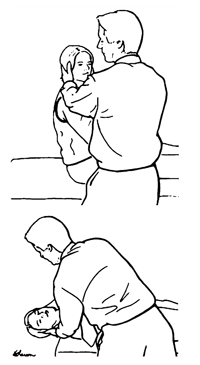This chart is a list of the most common health insurance plans we accept. This list is subject to change. Please check your individual plan to confirm their participation and the coverage allowed.
Due to the different physician groups and hospitals within the Wake Forest Baptist system, physician services and hospital services are billed separately. Please remember that health insurance coverage varies, so some services may not be covered.
If you don’t see your plan or you have questions, please call our Customer Service Center at 877-938-7497. We will do our best to work with you and your plan.
Key
WFUHS - Wake Forest University Health Sciences (professional services)
NCBH - North Carolina Baptist Hospital
LMC - Lexington Medical Center
CHC - Cornerstone Healthcare
Wilkes - Wilkes Regional Medical Center
HPR- High Point Regional
N/A - Not applicable to services provided at facility and/or CHC
NC -Not Contracted, very low to no volume for facility and/or CHC
Wake Forest Baptist Health Managed Care/MA Contracts - January2022
AETNA CONNECTED ACA/Exchange: Accepted at all locations
AETNA (PPO & HMO): Accepted at all locations
AETNA MEDICARE: Accepted at all locations
AETNA WHOLE HEALTH: Accepted at all locations
ALIGNMENT HEALTHCARE MEDICARE ADVANTAGE: Accepted at WFUHS, NCBH, Davie, LMC, CHC and Wilkes (not applicable to services provided at High Point)
AMBETTER OF NC: Accepted at all locations
AMERIHEALTH CARITAS NEXT ACA/Exchange: Accepted at all locations
APEX MEDICARE ADVANTAGE: Accepted at all locations
BCBSNC (PPO & HMO): Accepted at all locations
BCBS HIGH PERFORMANCE (NATIONAL NETWORK): Accepted at all locations
BLUE LOCAL WITH ATRIUM HEALTH: Accepted at all locations
BLUE MEDICARE: Accepted at all locations
BLUE VALUE: Accepted at all locations
CAROLINA BEHAVIORAL HEALTH: Accepted at WFUHS, NCBH and CHC (not applicable to services provided at Davie, LMC, Wilkes and High Point)
CIGNA: Accepted at all locations
CIGNA BEHAVIORAL HEALTH: Accepted at NCBH and High Point (not applicable to services provided at Davie, LMC, CHC and Wilkes)
CIGNA HEALTHSPRING MEDICARE ADVANTAGE: Accepted at WFUHS, NCBH, Davie, LMC, CHC and High Point (not applicable to services provided at Wilkes)
CIGNA LIFESOURCE (TRANSPLANTS): Accepted at WFUHS and NCBH (not applicable to services provided at Davie, LMC, CHC, Wilkes and High Point)
COVENTRY/WELLPATH: Accepted at all locations
CRESCENT PPO (ASHEVILLE): Accepted at WFUHS and NCBH (not contracted, very low to no volume for Davie, LMC, CHC, Wilkes and High Point)
DEVOTED HEALTH: Accepted at all locations
DIRECT NET: Accepted at WFUHS, NCBH, Davie, LMC, Wilkes and High Point (not contracted, very low to no volume for CHC)
FIRST HEALTH (COVENTRY): Accepted at all locations
FIRSTCAROLINACARE (PINEHURST, NC): Accepted at NCBH (not contracted, very low to no volume for WFUHS, Davie, LMC, CHC, Wilkes and High Point)
GATEWAY HEALTH ALLIANCE (VIRGINIA): Accepted at WFUHS and NCBH (not contracted, very low to no volume for Davie, LMC, CHC, Wilkes and High Point)
GOLDEN RULE INS (UNITED): Accepted at all locations
HEALTHGRAM (formerly PRIMARY PHYSICIAN CARE): Accepted at WFUHS, NCBH and LMC (not contracted, very low to no volume for Davie, CHC, Wilkes and High Point)
HEALTHTEAM ADVANTAGE: Accepted at all locations
HUMANA CHOICECARE: Accepted at all locations
HUMANA MEDICARE ADVANTAGE: Accepted at all locations
LIBERTY ADVANTAGE (MEDICARE ADVANTAGE): Accepted at WFUHS and NCBH (not applicable to services provided at Davie, LMC, CHC, Wilkes and High Point)
MAGELLAN (BEHAVIORAL HEALTH): Accepted at WFUHS, NCBH and CHC (not applicable to services provided at Davie, LMC, Wilkes and High Point)
MEDCOST: Accepted at all locations
MEDCOST ULTRA: Accepted at WFUHS, NCBH, Davie, LMC, Wilkes and High Point (not applicable at CHC)
OPTUMHEALTH (TRANSPLANTS - APPLICABLE TO NCBH/WFUHS ONLY): Accepted at WFUHS and NCBH (not applicable to services provided at Davie, LMC, CHC, Wilkes and High Point)
PREFERRED CARE OF VA INC: Accepted at WFUHS and NCBH (not contracted, very low to no volume for Davie, LMC, CHC, Wilkes and High Point)
SOUTHERN HEALTH SVCS (COVENTRY-PPO ONLY): Accepted at WFUHS, NCBH, Davie and CHC (not contracted, very low to no volume for LMC, Wilkes and High Point)
TWIN COUNTY (VIRGINIA): Accepted at WFUHS and NCBH (not contracted, very low to no volume for Davie, LMC, CHC, Wilkes and High Point)
UNITED BEHAVIORAL HEALTH: Accepted at WFUHS, NCBH, CHC and High Point (not applicable to services provided at Davie, LMC and Wilkes)
UNITED BEHAVIORAL HEALTH INTENSIVE OUTPATIENT PROGRAM (WFUHS ONLY): Accepted at WFUHS (not applicable for services provided at NCBH, Davie, LMC, CHC, Wilkes and High Point)
UNITED HEALTHCARE: Accepted at all locations
UNITED HEALTHCARE ESSENTIALS ACA/EXCHANGE: Accepted at all locations
UNITED HEALTHCARE MEDICARE: Accepted at all locations
VA CCN: Accepted at all locations
WELLCARE: Accepted at all locations
WELLPATH (COVENTRY): Accepted at all locations
Key
WFUHS - Wake Forest University Health Sciences (professional services)
NCBH - North Carolina Baptist Hospital
LMC - Lexington Medical Center
CHC - Cornerstone Healthcare
Wilkes - Wilkes Regional Medical Center
HPR- High Point Regional
N/A - Not applicable to services provided at facility and/or CHC
NC - Not Contracted, very low to no volume for facility and/or CHC

